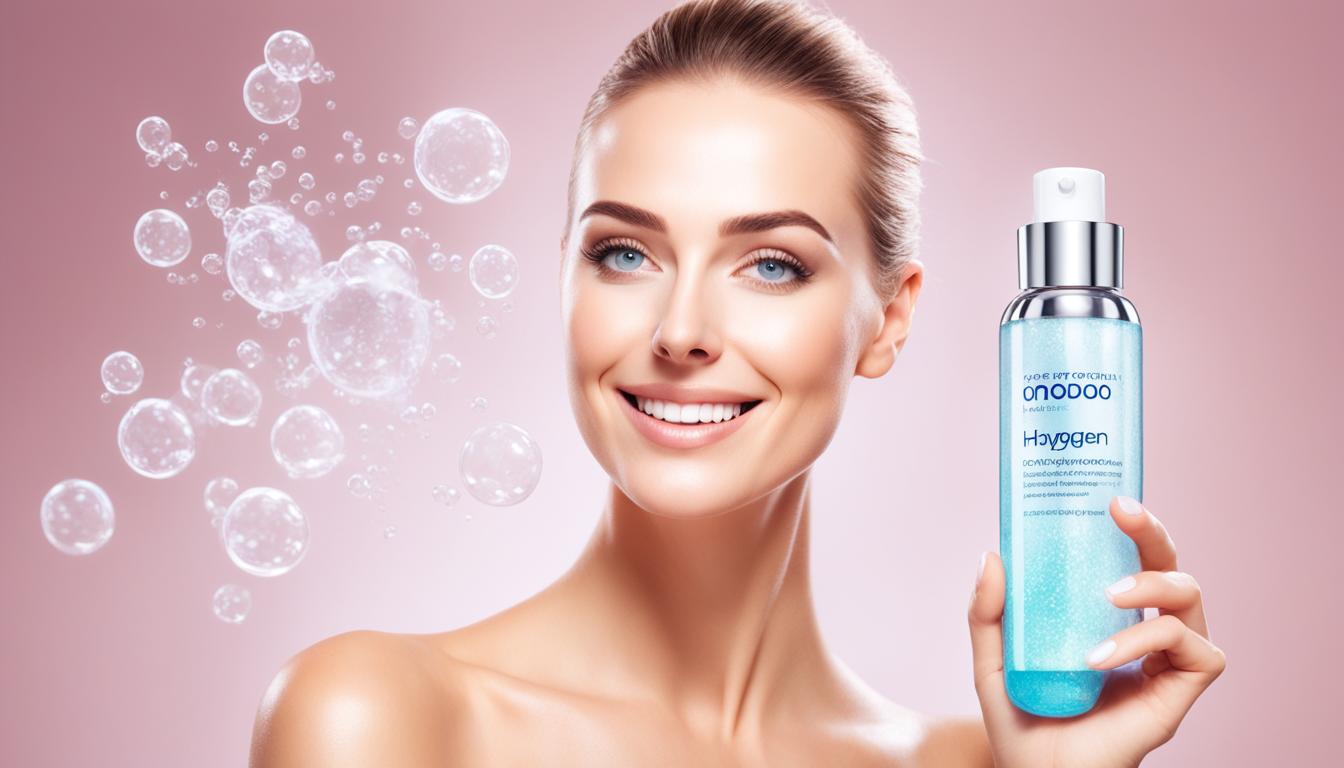The Centers for Disease Control and Prevention (CDC) say E. coli is the top cause of urinary tract infections (UTIs). It makes up 80-90% of all cases1. These bacteria are usually harmless in the gut but can move to the urinary tract. This happens through actions like not wiping properly after using the bathroom, being sexually active, or using certain birth control methods.
Symptoms of an E. coli UTI include needing to urinate often and urgently, feeling pain in the pelvic area, and seeing cloudy or bloody urine. This article will give you fast tips to get rid of E. coli in your urinary tract. It will also help ease UTI symptoms.
Key Takeaways
- No current treatments can cure E. coli infection, but rest and fluids can help prevent complications2
- Antibiotics are generally not recommended for E. coli UTIs as they can increase the risk of serious complications2
- Cranberry juice and probiotics may help treat and prevent E. coli UTIs3
- Proper sexual hygiene practices can reduce the risk of developing E. coli UTIs3
- Severe E. coli infections may require hospitalization and treatments like IV fluids and dialysis2
Understanding E. coli Urinary Tract Infections
Symptoms and Causes of E. coli UTIs
E. coli infections in the urinary tract cause symptoms like needing to urinate often and urgently, pain while urinating, and pelvic discomfort4. They can also make your urine cloudy or smell bad, and it might have blood in it4. Studies show that E. coli is behind 80-85% of UTIs4.
Women get E. coli UTIs much more often than men, about 30 times more5. This is because the female urethra is closer to the anus and shorter, making it easier for E. coli to get into the bladder5.
How E. coli Enters the Urinary Tract
E. coli can get into the urinary tract in many ways, like not wiping properly after using the bathroom, or during sex5. It can also happen with certain birth control methods or during pregnancy because of hormonal changes and the baby’s weight5. In fact, E. coli is the main cause of UTIs, affecting 80 to 90 percent of cases5.
| Symptom | Description |
|---|---|
| Frequent and Urgent Urination | A common symptom of E. coli UTIs is a frequent and urgent need to urinate, even when the bladder is not full. |
| Burning or Pain During Urination | Patients may experience a burning or stinging sensation when urinating due to the E. coli infection. |
| Pelvic Discomfort | Some individuals with E. coli UTIs report feeling pelvic pressure or discomfort. |
| Cloudy or Foul-Smelling Urine | The urine may appear cloudy or have an unpleasant odor due to the E. coli infection. |
| Blood in Urine | In some cases, the urine may contain visible blood due to the E. coli infection. |
Symptoms of a UTI caused by E. coli can be mild or severe. If it reaches the kidneys, you might also have fever, upper back and side pain, nausea, and vomiting5. Knowing how E. coli gets into the urinary tract, like through poor hygiene or hormonal changes, helps in preventing and treating these infections5.
How to Get Rid of E. coli in Urinary Tract
To treat an E. coli UTI, you need a mix of treatments. Doctors usually start with antibiotics to kill the bacteria6. But, with antibiotic resistance growing, we might need new ways to fight E. coli in the urinary tract.
Cranberry juice is a natural way to help clear E. coli and ease UTI symptoms7. Probiotics and some herbal supplements can also help by keeping the gut healthy6.
Good hygiene, like wiping correctly and urinating after sex, can stop future infections7. Drinking lots of water also helps by washing bacteria away7.
Sometimes, using antibiotics and natural remedies together works best to beat E. coli in the urinary tract8. Always talk to a healthcare provider to find the right treatment for you.
“Close to 100 million people worldwide acquire UTIs each year, and about a quarter of individuals with UTIs develop another infection within six months, despite antibiotic treatment.”6
Antibiotics usually clear a UTI in 1 to 2 days8. But, be aware of possible side effects like yeast infections8. By trying both traditional and natural treatments, you can get rid of E. coli and prevent future infections.
Antibiotic Treatment for E. coli UTIs
Antibiotics are often the first choice to treat UTIs caused by E. coli9. The type of antibiotic depends on the bacteria in the urine and how severe the infection is.
Common Antibiotics Used for UTI Treatment
Fluoroquinolones, like ciprofloxacin, are rarely used for simple UTIs because of the risks9. But, they might be given for complicated UTIs or kidney infections if other options aren’t available9. Bactrim and similar antibiotics are usually the first choice for E. coli UTIs9.
UTI symptoms usually go away in a few days with antibiotics. But, you might need to keep taking the medicine for a week or more to clear the infection completely9. For recurring UTIs, taking low-dose antibiotics for six months or more can help prevent future infections9.
| Antibiotic | Effectiveness Against E. coli UTIs |
|---|---|
| Bactrim (trimethoprim-sulfamethoxazole) | Commonly used as first-line treatment |
| Ciprofloxacin (fluoroquinolone) | Not commonly recommended for simple UTIs, but may be used for complicated infections |
| Fosfomycin | Demonstrated in vitro activity against E. coli isolates from UTIs10 |
If the E. coli strain is resistant to common antibiotics, a urine culture may be needed to find the right antibiotic9. Sometimes, combining antibiotics can help fight resistant E. coli strains9.
It’s key to use antibiotics correctly to get rid of the E. coli infection and stop it from spreading to the kidneys9. By following the treatment plan and taking antibiotics as told, you can beat the E. coli infection and feel better91011.
Natural Remedies for Clearing E. coli UTIs
Antibiotics are often used to treat E. coli UTIs, but natural remedies can also help. These remedies support the body’s natural defenses12. UTIs are common, especially in women, and natural treatments can clear E. coli from the urinary tract.
Drinking lots of water and cranberry juice is a simple way to fight UTIs12. Adults should drink 6 to 8 glasses of water daily to flush out harmful bacteria12. Cranberries may stop E. coli from sticking to bladder cells, helping to prevent UTIs12.
D-mannose, a sugar that sticks to E. coli, is another natural remedy12. It has been shown to reduce UTIs and improve life quality12. D-mannose plus a probiotic was found to lessen UTI symptoms in people with bladder cancer12.
Applying a warm compress to the lower abdomen can ease pain12. Avoiding alcohol and caffeine can also help12. Wearing cotton-lined and loose clothes keeps the genital area dry and clean, preventing bacterial growth12.
Using these natural remedies can help manage E. coli UTIs and support healing12. While antibiotics are sometimes needed, these natural methods can be helpful in preventing UTIs12.
“Cranberries have been used as a prevention of UTIs for generations, as studies have shown that they make it harder for bacteria causing UTIs to stick to urinary tract walls.”13
Other natural remedies like probiotics and garlic are also effective against UTIs14. Probiotics can lower the risk of UTIs, especially after antibiotics14. Garlic has antimicrobial properties that may prevent UTIs, with studies showing positive results in rats14.
By combining these natural methods with lifestyle changes and staying hydrated, you can manage E. coli UTIs and support your urinary tract health12. While more research is needed, these remedies are a valuable addition to traditional treatments12.
Preventing Recurrent E. coli Urinary Tract Infections
Lifestyle Changes to Reduce UTI Risk
If you often get E. coli urinary tract infections (UTIs), you can lower your risk. The Centers for Disease Control and Prevention (CDC) suggest wiping from front to back and urinating after sex to prevent E. coli from getting into your urinary tract15. Also, avoid spermicide in birth control and keep your vagina healthy16.
Drinking enough water is key to preventing UTIs. Aim for at least 50 ounces (about 1.5 liters) of fluids daily, including water and cranberry juice16. Try to empty your bladder four to eight times a day to stop bacteria from sticking around16.
Changing your lifestyle can also help prevent UTIs. Urinate right after sex to remove bacteria16. Managing health issues like diabetes can also help15.
“UTIs affect about 150 million people worldwide annually, and E. coli is responsible for up to 90% of these cases.”17
If you keep getting UTIs, especially after menopause, you should see a doctor15. They can look at your medical history and suggest treatments like daily antibiotics15.
By making these lifestyle changes and getting advice from a healthcare professional, you can lower your risk of getting E. coli UTIs. This helps keep your urinary tract healthy16.
Other Bacteria That Can Cause UTIs
E. coli is the main cause of UTIs, making up 80-90% of cases18. But, other bacteria can also infect the urinary tract. The Mayo Clinic lists Klebsiella pneumoniae, Pseudomonas aeruginosa, Staphylococcus aureus, Enterococcus faecalis, and Streptococcus agalactiae as less common causes18. These bacteria are more common in older people or those with weak immune systems.
Research shows E. coli is behind 65% to 90% of UTIs in kids19. Other bacteria like Klebsiella, Proteus, Pseudomonas, and Enterococcus can also cause infections in children19. These bacteria are harder to treat because they resist many antibiotics. They are more common in boys, after recent antibiotic use, or with kidney problems19.
Sexually transmitted infections like Chlamydia trachomatis can also cause UTIs20. People with weak immune systems, like those with autoimmune diseases or diabetes, are more likely to get UTIs from various bacteria20.
| Bacteria | Percentage of UTI Cases |
|---|---|
| Escherichia coli (E. coli) | 80-90% |
| Klebsiella pneumoniae | Less common |
| Pseudomonas aeruginosa | Less common |
| Staphylococcus aureus | Less common |
| Enterococcus faecalis | Less common |
| Streptococcus agalactiae | Less common |
Knowing which bacteria cause a UTI helps doctors choose the right treatment18. This approach helps fight antibiotic resistance and improves treatment success.
“Non-E. coli pathogens were significantly more likely to be resistant to a wide range of antibiotics.”19
In summary, E. coli is the main UTI cause, but other bacteria like Klebsiella, Pseudomonas, Staphylococcus, Enterococcus, and Streptococcus can also infect the urinary tract18. Knowing the bacteria type is key to effective treatment and management.
Diagnosing E. coli Urinary Tract Infections
Urinalysis and Urine Culture Tests
To diagnose a UTI caused by E. coli, a two-step process is used4. First, a urinalysis checks for bacteria in the urine4. If bacteria are found, a urine culture may be done to find the bacteria type and choose the right antibiotic4.
A urine culture sends a sample to a lab for bacteria growth and analysis4. This is key for those with recurring UTIs or not responding to antibiotics4. E. coli causes 65 to 75 percent of UTIs, with other bacteria like Staphylococcus saprophyticus, Pseudomonas aeruginosa, and Klebsiella pneumoniae also playing a role21.
Every year, 150 million people get UTIs, with 10.5 million cases in the U.S21.. Women face a higher risk, with up to 60 percent experiencing a UTI at some point21. About 50% of women will have a UTI at least once, and many will have repeat infections22. Men are less likely, but still, 1 in 10 will have a UTI in their lifetime22.
Tests for UTIs include urine dipsticks, urinalysis, urine culture, and more to ensure the right treatment22.
| Test | Purpose |
|---|---|
| Urinalysis | Detect the presence of bacteria in the urine |
| Urine Culture | Identify the specific type of bacteria and determine the most effective antibiotic treatment |
| Other Tests | Ultrasounds, cystoscopic exams, urodynamics, IV pyelogram, CT scans, blood tests to check for upper-tract UTIs |
Getting an accurate diagnosis is key to treating E. coli UTIs. By using urinalysis and urine culture tests, doctors can find the infection’s cause and plan treatment42122.
“Diagnostic tests are essential for identifying the specific bacteria causing a UTI and determining the most appropriate antibiotic treatment.”
Complications of Untreated E. coli UTIs
Not treating an E. coli UTI can lead to serious and even life-threatening issues23. The CDC says the infection can move to the kidneys, causing pyelonephritis23. This can harm the kidneys permanently, lead to sepsis, and even cause kidney failure in some cases23.
E. coli UTIs can also raise the risk of preterm birth in pregnant women23. Chronic UTIs that come back within a month or happen often can lead to kidney infections, kidney disease, and increase the risk of premature delivery or low birth weight babies23.
Some people are more likely to get UTIs and their complications24. This includes women, older adults, people with diabetes, those with urinary catheters, and babies in diapers24. It’s important to get medical help quickly to clear the E. coli bacteria and prevent these serious issues23.
UTIs are more common in women, but men with prostate issues are also at risk due to an enlarged prostate24. Older men with prostate issues and men between 3 months and 50 years may need checks for any problems25.
Chronic bacterial prostatitis often causes UTIs to come back in men, with E. coli being the main cause25. Epididymitis, a complication of UTIs, is a common cause of a swollen scrotum in adult men, often linked to certain bacteria in younger men25.
Untreated UTIs can lead to serious issues like pyelonephritis, mainly caused by E. coli in about 25% of men25. Other bacteria can also cause it, but less often25.
The risks of not treating E. coli UTIs show why it’s key to get medical help quickly and follow treatment plans23. Watching for symptoms and getting early treatment is vital for your health23.
Conclusion
E. coli is the main cause of most urinary tract infections (UTIs). It leads to symptoms like frequent urination, burning when you pee, and discomfort in your pelvis26. To treat an E. coli UTI, you usually need antibiotics from a doctor. But, with bacteria getting more resistant, we also need natural ways and prevention to fight these infections27.
Keeping clean helps prevent UTIs. This means wiping from front to back and not using douches26. Drinking lots of water, including cranberry juice without sugar, might also help stop UTIs from coming back26. Taking care of health issues like diabetes or kidney stones can also lower UTI risk26.
It’s important to see a doctor quickly to get rid of the E. coli infection. This helps avoid serious problems like kidney damage or sepsis28. By following these tips and working with your doctor, you can get rid of E. coli and keep your urinary system healthy28.
FAQ
What are the symptoms of an E. coli urinary tract infection?
How does E. coli enter the urinary tract?
What are the primary treatments for an E. coli UTI?
What are some common antibiotics used to treat E. coli UTIs?
What natural remedies can help provide relief for an E. coli UTI?
What lifestyle changes can help prevent recurrent E. coli UTIs?
Can other bacteria besides E. coli cause urinary tract infections?
How are E. coli UTIs diagnosed?
What are the potential complications of an untreated E. coli UTI?
Source Links
- What Is E. coli? – https://www.webmd.com/food-recipes/food-poisoning/what-is-e-coli
- E. coli – Diagnosis and treatment – Mayo Clinic – https://www.mayoclinic.org/diseases-conditions/e-coli/diagnosis-treatment/drc-20372064
- 7 Home Remedies for UTIs – https://www.medicalnewstoday.com/articles/treat-uti-without-antibiotics
- What’s an E. coli Infection? – https://my.clevelandclinic.org/health/diseases/16638-e-coli-infection
- E. Coli and UTIs (Urinary Tract Infections): The Common Connection – https://www.healthline.com/health/e-coli-uti
- UTI treatment reduces E. coli, may offer alternative to antibiotics | Washington University School of Medicine in St. Louis – https://medicine.wustl.edu/news/uti-treatment-lowers-numbers-gut-e-coli-may-offer-alternative-antibiotics/
- Urinary Tract Infections – https://www.hopkinsmedicine.org/health/conditions-and-diseases/urinary-tract-infections
- Can You Treat a UTI Without Antibiotics? – GoodRx – https://www.goodrx.com/conditions/urinary-tract-infection/treatment-without-antibiotics
- Urinary tract infection (UTI) – Diagnosis and treatment – Mayo Clinic – https://www.mayoclinic.org/diseases-conditions/urinary-tract-infection/diagnosis-treatment/drc-20353453
- Antibiotics, Cephalosporins, 3rd Generation, Penicillins, Amino, Penicillins, Extended-Spectrum, Fluoroquinolones, Tetracyclines, Sulfonamides, Monobactams, Carbapenems – https://emedicine.medscape.com/article/217485-medication
- An evaluation of E. coli in urinary tract infection in emergency department at KAMC in Riyadh, Saudi Arabia: retrospective study – https://www.ncbi.nlm.nih.gov/pmc/articles/PMC5806437/
- 8 UTI Home Remedies for Relief Other Than Antibiotics – https://www.healthline.com/health/womens-wellness-uti-antibiotics
- 12 BEST Home Remedies For UTIs – National Association For Continence – https://nafc.org/bhealth-blog/home-remedies-for-utis/
- 7 Home Remedies for UTIs (Urinary Tract Infections) – https://www.healthline.com/health/uti-home-remedies
- What doctors wish patients knew about UTI prevention – https://www.ama-assn.org/delivering-care/public-health/what-doctors-wish-patients-knew-about-uti-prevention
- 5 tips to prevent a urinary tract infection – https://www.mayoclinichealthsystem.org/hometown-health/speaking-of-health/5-tips-to-prevent-a-urinary-tract-infection
- What to know about E.coli UTI treatment – https://www.medicalnewstoday.com/articles/e-coli-uti-treatment
- Urinary tract infection Information | Mount Sinai – https://www.mountsinai.org/health-library/report/urinary-tract-infection
- Urinary tract infection caused by bacteria other than Escherichia coli – https://www.ncbi.nlm.nih.gov/pmc/articles/PMC2082698/
- What Are Urinary Tract Infections (UTIs)? What Causes Them? – https://www.webmd.com/a-to-z-guides/understanding-urinary-tract-infections-basics
- The Connection Between E. Coli and Urinary Tract Infections (UTIs) – https://www.everydayhealth.com/e-coli/urinary-tract-infection/
- Urinary Tract Infection (UTI) – https://www.webmd.com/women/your-guide-urinary-tract-infections
- Chronic Urinary Tract Infection (UTI): Symptoms and Treatment – https://www.healthline.com/health/chronic-urinary-tract-infection
- Urinary tract infection (UTI) – https://www.healthdirect.gov.au/urinary-tract-infection-uti
- Urinary Tract Infection (UTI) in Males: Practice Essentials, Background, Pathophysiology – https://emedicine.medscape.com/article/231574-overview
- Everything you should know about urinary tract infections – https://www.medicalnewstoday.com/articles/189953
- Deep insights into urinary tract infections and effective natural remedies – African Journal of Urology – https://afju.springeropen.com/articles/10.1186/s12301-020-00111-z
- Urinary Tract Infections Caused by Uropathogenic Escherichia coli: Mechanisms of Infection and Treatment Options – https://www.ncbi.nlm.nih.gov/pmc/articles/PMC10341809/



